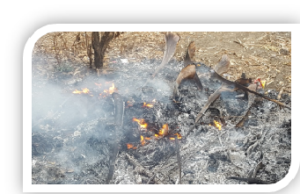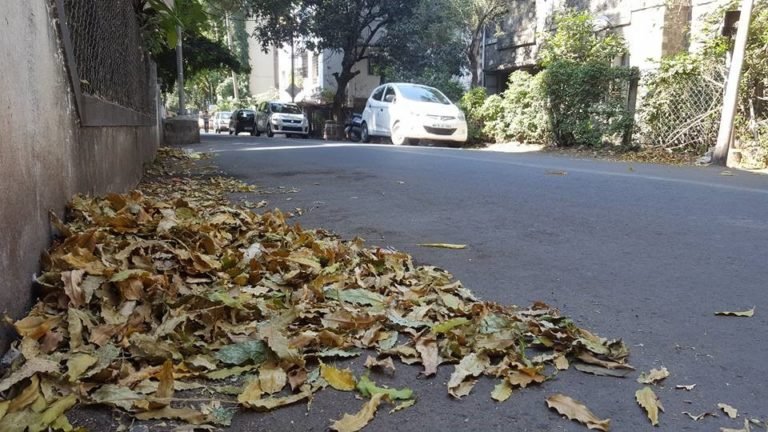Keeping home clean is never ending activity, isn’t it?
You sweep every day and still furniture is covered with dust the next day.
And what if we skip a few days? Or if we are away?
Oh, can’t even imagine. Layers and layers of dust everywhere, parapet, table tops, furniture edges, window panes; just any horizontal surface for that matter.

I will not be sharing any dramatic things you could do to reduce dust in the house. Honestly, there are no such miracles. Especially in a tropical country like ours where heat and dust are the integral part of our environment.
What we would discuss in this post, is why dust occurs, what exactly it contains and how we can make use of it.
Yes, I know, it is a little strange. Why anybody would want to use the dust instead of simply throwing it away?
Let’s see why.
First, what dust consists of?
Dust in our house is mostly minerals from outdoor soil, rock dust, plant pollen, human skin cells, human and pet hair, textile fibers, paper particles, many other materials from the local environment. So, dust is not such an alien object.
Our skin sheds dead cells all the time. You know how many dead cells we shed every hour? Around 30, 000 to 40,000. huh? 😊
Every human being sheds around total 3.6 kg of dead cells every year. Of course, not whole of it falls in the house as dust. Some of it is lost when we take a bath and enters the drains while some of it remains as dust.
What happens when we sweep it and bin it? And why we should use it?
Here is the typical urban scenario.
We sweep our house, collect dust and deposit it in the dust-bin. Daily, through door-to-door garbage collection, contents from our dust-bin are collected and taken to the nearest garbage transfer station.
Thus, our garbage enters municipal waste collection system. Our cities struggle with management of waste. Most collected waste goes to the dump yards. Dump yard is the area usually outside city limits where garbage is daily deposited.
Organic matter in garbage dump decomposes. Accumulated waste when decomposes, emits methane. We often see in the news, some or other dump yards catching fire. That is due to methane gas.
You must have observed, when kitchen waste remains as it is for a long time, it starts decomposing and gives out a tea-colored liquid. It has unbearably foul smell. This liquid is called “leachate”.
What happens to the dust bin at home, same thing happens with the garbage in the dump yard. Imagine the quantity of leachate that would be produced where dust-bins of all the households in the city are dumped.
In dump-yards, rain water when passes through the garbage, gets contaminated and flows out as leachate. Leachates eventually enter nearby water source or percolate in groundwater. Concentration of nutrients in the leachates is harmful to water bodies.
As we saw earlier, each of us sheds dead cells weighing around 3.6 kg in a year. Say half of it goes to landfills from our dust bins, still imagine the quantity for the whole city? Take case of Pune city, with population around 50 lacs. 50,00,000 x 1.8 kg = 90,00,000. 90 lac kg house dust in dump yards every year in a city of size of Pune?
Mind-blowing!!
So, reason enough why we should reduce load on municipal waste collection systems? For cleaner and safer environment for us, our kids and future generations.
We can reduce load on municipal waste management system if we divert house dust to the compost or soil.
Here is how.
Let it go to the soil
Simply deposit collected dust in a potted plant or in a plant bed in the garden.
Let’s compost it
Do you do composting? Do you use culture to speed up the process?
Do you know house dust is a great culture?
Here is why.
Bacteria and fungi are the chemical decomposers that break down wet waste. Culture is a microbe mixture which we supply to wet waste to speed up the process.
“In a single centimeter of skin, you can find thousands of bacteria,” says James Meadow, former University of Oregon researcher”
So, the house dust that contains dead skin cells contains bacteria which can act as culture.
So, let’s not bin the dust, let’s compost it.
What say? It is easy to implement, isn’t it? All the process remains the same. Only put it in compost bin instead of dust-bin, that’s all.
If you use vacuum cleaner, your job is even easier. Simply empty the bag or cannister in the compost.
This way, we prevent house dust landing in dump yards, reduce load on municipal waste collection and enrich our compost, and take a step towards cleaner and healthier environment.





Would like to understand what about the dead skin cells of someone with disease conditions? Aren’t those harmful in any way? (Might be a silly question)
Hi Medha, Not at all a silly question. Yes, if person has any skin disease, cells might be infected. But it does not matter in compost. Compost process at its high point, creates a lot of heat. That’s where thermophilic bacteria take over the process. Usually no infection survives at that temperature. So, in compost it is perfectly fine.